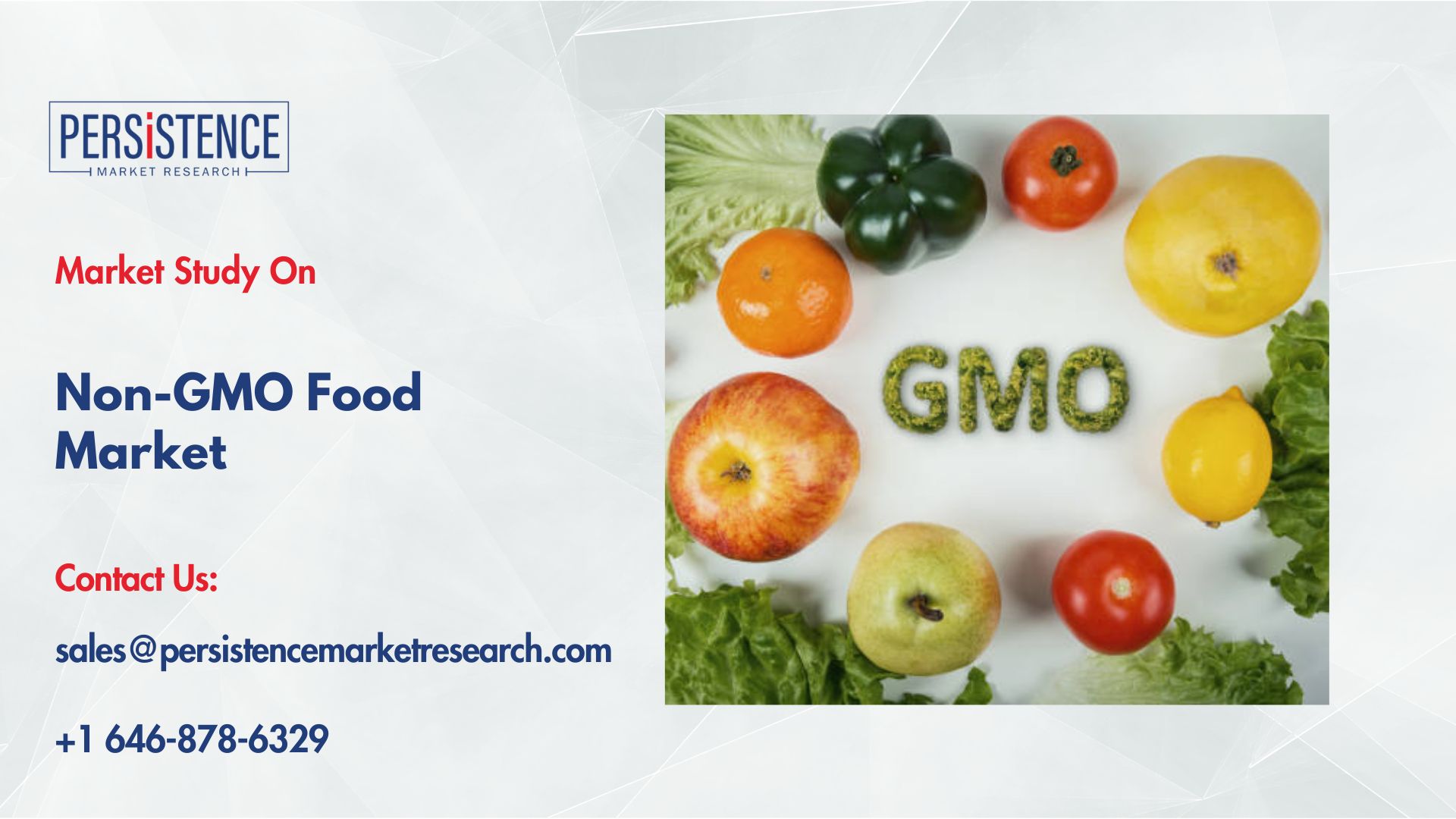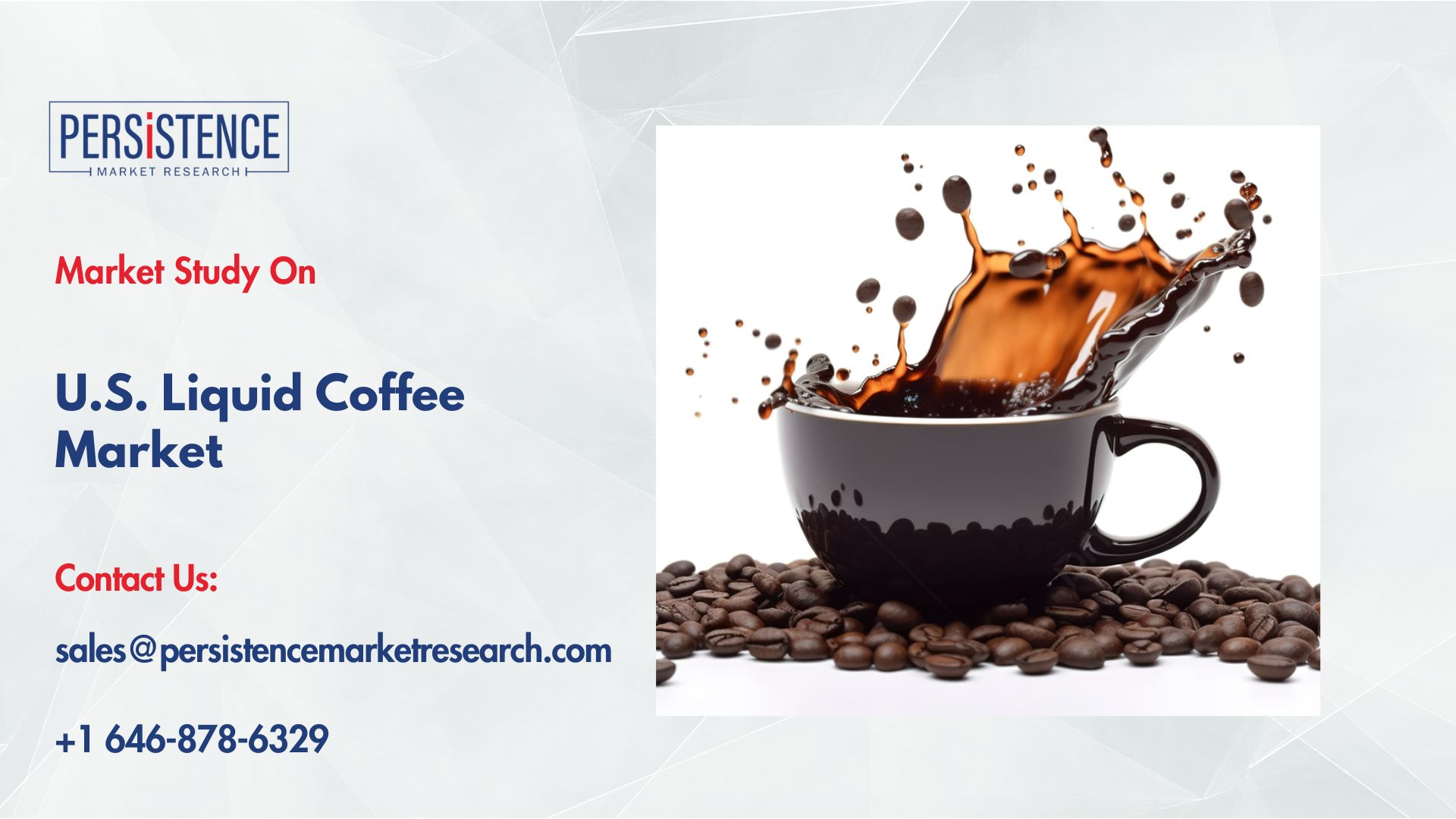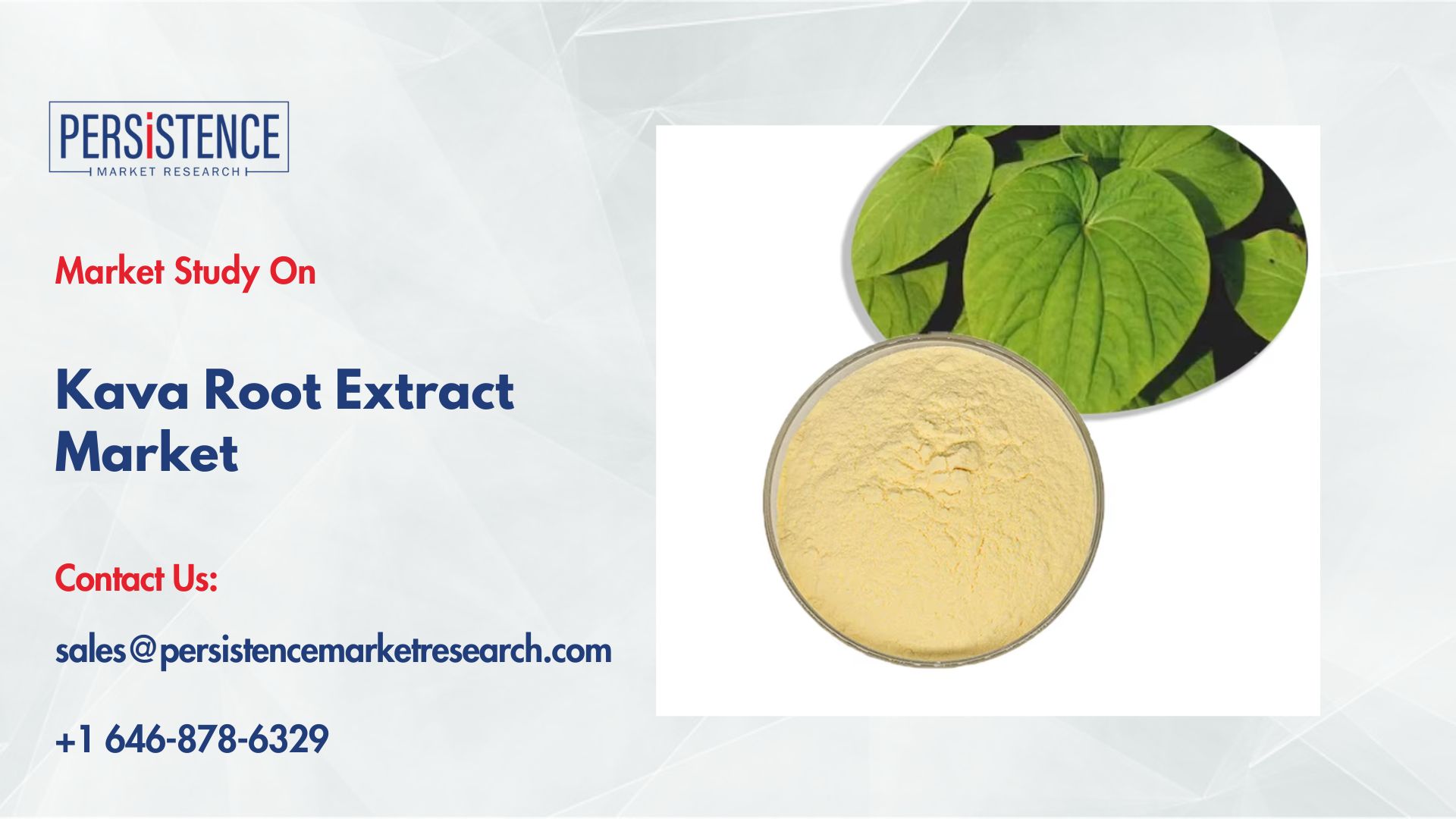Non-GMO Food Market Benefits from Strong Beverage Segment Growth

Strong 8k brings an ultra-HD IPTV experience to your living room and your pocket.
Non-GMO Food Market: Share and Trends Analysis (2019–2032)
The global food industry is undergoing a fundamental transformation, driven by increasing consumer awareness, evolving dietary preferences, and a growing emphasis on health and sustainability. Among the most significant trends to emerge from this shift is the rising popularity of non-GMO (Genetically Modified Organism) food products. As consumers around the world become more concerned about food safety, ingredient transparency, and environmental sustainability, the demand for non-GMO products has witnessed a sharp upsurge. According to recent estimates, the global non-GMO food market is projected to grow from US$ 70.7 billion in 2025 to US$ 120.1 billion by 2032, registering a robust compound annual growth rate (CAGR) of 7.9% during the forecast period.
This surge in demand is being primarily fueled by clean-label trends, rising health consciousness, and the increasing number of consumers opting for vegan and vegetarian lifestyles. Non-GMO foods have become a symbol of natural and safe eating, particularly for consumers who are skeptical about the long-term effects of genetically modified ingredients. Brands are responding by expanding their non-GMO product portfolios, investing in research and development, and adopting stringent labeling standards to build consumer trust.
Market Outlook and Growth Trajectory (2019–2032)
The non-GMO food market has shown significant momentum since 2019, growing at a steady pace as clean-label claims gained traction across food categories. From a historical CAGR of 6.7% between 2019 and 2024, the market is expected to accelerate further in the coming years. By 2025, non-GMO food is estimated to hold around 56.7% of the global clean-label food market, reflecting increasing public awareness regarding the potential health risks associated with genetically modified foods.
Supermarkets and hypermarkets are anticipated to be the leading distribution channels, contributing around 34.2% of the total sales in 2025. These retail formats are capitalizing on health trends by offering prominent shelf space and dedicated sections for non-GMO products, thereby catering to the growing demand from health-conscious shoppers.
North America is expected to remain at the forefront of the non-GMO food market, with an estimated 43.2% market share in 2025. This dominance is attributed to widespread consumer advocacy, regulatory clarity, and proactive efforts by brands to bolster their offline and online presence. Beyond North America, regions such as Europe and Asia Pacific are emerging as high-growth zones, supported by stringent GMO regulations and increasing resistance to GM ingredients.
Key Market Drivers
Growing Demand for Ingredient Transparency
The quest for ingredient transparency is among the most powerful drivers shaping the non-GMO food market. Consumers, especially younger generations such as millennials and Gen Z, are no longer satisfied with vague or ambiguous product labeling. They are demanding to know the origin, sourcing, and nature of ingredients used in their food.
According to the 2024 Label Insight Food Transparency Study, nearly 94% of consumers emphasized the importance of brands being honest and transparent about their ingredient sourcing and manufacturing processes. Additionally, 75% expressed a willingness to switch to brands that offer detailed product information, including sourcing practices and ingredient origins.
This rising demand for transparency has led to the popularity of third-party certifications such as the Non-GMO Project Verified label. Such certifications offer assurance to consumers about the absence of GMOs, thus driving adoption. Food brands, in turn, are investing in traceability technologies and sustainable sourcing practices to align with consumer expectations.
Clean-Label Movement and Health Awareness
The clean-label movement has revolutionized the way consumers interact with food products. A growing number of individuals are seeking minimally processed foods with clear, recognizable ingredients. The avoidance of GMOs is seen as a key element of the clean-label philosophy.
Health-conscious consumers are increasingly linking GMOs with potential health risks, such as allergies, antibiotic resistance, and digestive issues. Although scientific consensus remains divided on the health impact of GMOs, the perception alone is powerful enough to influence purchasing behavior. Consumers are choosing non-GMO food not just for themselves but also for their children, amplifying market growth.
Vegan and Plant-Based Diets Fueling Growth
The global shift toward vegan and plant-based diets is providing a significant boost to the non-GMO food market. Vegan and vegetarian consumers tend to be highly discerning about the origins of their food. They often prefer natural and organic products, including non-GMO variants, as part of their ethical and health-conscious lifestyles.
In developed countries, the rise of plant-based alternatives to meat and dairy has created strong demand for non-GMO ingredients. Non-GMO soy, pea protein, almond milk, and coconut-based products are becoming staples in vegan households. As this demographic continues to grow, the market for non-GMO foods is set to expand in tandem.
Market Restraints
Sustainability Overtaking Non-GMO as Consumer Priority
While the demand for non-GMO products remains strong, younger consumers are beginning to shift their priorities toward sustainability and climate impact. The emergence of food technologies such as lab-grown meat, cellular agriculture, and precision fermentation has redirected consumer attention to carbon footprints and ethical sourcing over GMO status.
Brands like Impossible Foods have gained widespread acceptance despite utilizing genetically modified ingredients. Their ability to provide meat-like taste with a lower environmental impact is resonating with consumers, especially those under the age of 35. A 2024 report found that only 24% of consumers in this age group prioritized non-GMO labeling, compared to over 45% who considered sustainability more important. This evolution in consumer values may challenge the long-term dominance of non-GMO as a standalone selling point.
Opportunities in Emerging Economies
Rising Food Safety Awareness in Developing Countries
As food safety awareness grows in emerging economies, the demand for non-GMO food is experiencing a parallel rise. Countries like Brazil, where genetically modified corn and soy dominate agriculture, are witnessing increasing consumer resistance to transgenic foods. This opposition is opening new doors for non-GMO brands, especially those offering organic alternatives.
In China, the upper-middle-class demographic is driving demand for safe and traceable food products. With increasing skepticism about GMOs and rising health literacy, Chinese consumers are showing a preference for non-GMO labeled goods. A 2023 survey by the National Consumer Association found that 61% of respondents were willing to pay a premium for non-GMO food. This trend is prompting companies to invest in local manufacturing and digital channels to reach these consumers effectively.
Product Type Trends
Food Segment Dominates with Consumer Shift to Natural Eating
Among product categories, the food segment is anticipated to remain dominant, accounting for about 56.7% of market share in 2025. The increasing rejection of synthetic additives and crop-derived GM ingredients in processed food items has made consumers more conscious of what they consume. Commonly modified crops such as corn, soy, and canola are extensively used in cereals, baked goods, snacks, and frozen meals. As awareness grows, shoppers are choosing non-GMO food products with verified labels, boosting the segment's growth.
Beverages Show Promise Amid Rise of Functional and Plant-Based Drinks
Beverages, while representing a smaller segment, are forecasted to witness strong growth through 2032. The growing popularity of functional beverages—such as those enriched with vitamins, adaptogens, or probiotics—is pushing brands to formulate products with non-GMO ingredients. Plant-based beverages made from soy, almond, oats, and peas are also increasingly being positioned as non-GMO. Companies such as Ripple Foods and Califia Farms are already capturing market share by promoting clean-label, non-GMO credentials.
Distribution Channel Analysis
Supermarkets/Hypermarkets Lead Due to Product Visibility and Accessibility
Supermarkets and hypermarkets continue to be the leading distribution channels for non-GMO food, accounting for nearly 34.2% of the market in 2025. These retail spaces provide a wide array of choices and dedicate special sections to health foods, making it easier for consumers to locate non-GMO options. The ability to purchase family-sized packs and access affordable pricing also makes supermarkets a preferred destination for household shopping.
Online Retail Gains Traction with Convenience and Detailed Information
Online retail is emerging as a high-growth channel, particularly among urban, tech-savvy consumers. Platforms like Amazon, iHerb, and Thrive Market offer curated categories for non-GMO products, making it simple for users to browse and filter options. Detailed product descriptions, customer reviews, and transparent ingredient lists help consumers make informed decisions. As e-commerce expands across global markets, its role in driving non-GMO product adoption will grow significantly.
Regional Market Insights
North America Leads with Widespread Non-GMO Advocacy
North America, particularly the United States, is expected to retain its leading position in the non-GMO food market. Consumers in the region are highly vocal about food safety and labeling transparency. According to the International Food Information Council, around 42% of U.S. consumers in 2023 preferred non-GMO products during grocery shopping.
Younger demographics in the region are increasingly aligning their food choices with ethical concerns such as pesticide use, biodiversity loss, and the environmental impact of agriculture. These trends, coupled with robust organic certification standards and regulatory oversight, are reinforcing the market's expansion in North America.
Europe Embraces Non-GMO Products Amid Stringent Regulations
Europe remains a stronghold for the non-GMO movement due to its cautious approach toward genetically modified crops. The European Union mandates clear labeling of GM ingredients and has tight restrictions on GMO cultivation. These policies have fostered a highly informed consumer base that actively seeks out non-GMO and organic alternatives.
Germany, in particular, is witnessing a rapid rise in non-GMO food sales. With a 12% year-on-year increase in 2024, the country’s focus on organic farming practices and policy support through the Organic Farming Act is fostering robust market conditions. Brands operating in Europe are emphasizing non-GMO labels as a value-added feature to gain consumer trust.
Asia Pacific Shows Rapid Adoption Led by Japan and South Korea
Asia Pacific is fast becoming a growth engine for the non-GMO food industry. Japan is emerging as a key market, driven by traditional food values and rising health consciousness. Major retail chains such as Aeon and Ito-Yokado are expanding their non-GMO offerings to meet consumer expectations.
South Korea is also witnessing a positive shift. Backed by government policies supporting non-GMO farming, products such as non-GMO ginseng and rice are gaining popularity. Leading supermarkets like Emart and Lotte Mart reported double-digit growth in non-GMO product sales in 2024, reflecting a clear shift in consumer preferences.
Competitive Landscape and Key Developments
The global non-GMO food market is highly fragmented, with both multinational giants and local players competing for market share. Companies are focusing on expanding their manufacturing capacities, building direct-to-consumer platforms, and launching innovative product lines to cater to niche segments.
In April 2025, Jans Enterprises Corp. launched its Sparkling Prebiotic Drinks in the U.S. market. These beverages, crafted with clean ingredients and marketed as non-GMO, were developed to appeal to health-conscious consumers seeking gut-friendly options.
In February 2025, CIRANDA launched a full-service e-commerce portal to offer certified organic and non-GMO ingredients to businesses and consumers alike. The platform streamlines product discovery, documentation, and account management in one place.
In December 2024, India-based LT Foods Ltd. introduced DAAWAT Jasmine Thai Rice, a globally certified non-GMO product sourced directly from Thailand. This launch signifies the increasing demand for non-GMO gourmet foods in emerging markets.
Leading companies in the space include Amy's Kitchen, Organic Valley, Blue Diamond Growers, The Hain Celestial Group, The Kellogg’s Company, Nestlé S.A., PepsiCo Inc., Danone S.A., Clif Bar & Company, and Pernod Ricard.
Conclusion
The non-GMO food market is on a strong upward trajectory, driven by increasing consumer demand for transparency, clean-label ingredients, and safe, natural products. While competition from newer sustainability-driven trends may temper growth in certain segments, the core demand for non-GMO products remains resilient. As regulatory frameworks become clearer and consumer awareness deepens, brands that prioritize trust, transparency, and innovation are well-positioned to lead in this dynamic marketplace. With growing opportunities across emerging markets and the evolving preferences of health-conscious consumers worldwide, the non-GMO food market is poised to become a foundational pillar in the future of global food systems.
𝐄𝐱𝐩𝐥𝐨𝐫𝐞 𝐭𝐡𝐞 𝐋𝐚𝐭𝐞𝐬𝐭 𝐓𝐫𝐞𝐧𝐝𝐢𝐧𝐠 𝐑𝐞𝐩𝐨𝐫𝐭:
Maltitol Market
Coconut Oil Market
Note: IndiBlogHub features both user-submitted and editorial content. We do not verify third-party contributions. Read our Disclaimer and Privacy Policyfor details.







